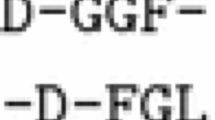Abstract
Multiple Sequence Alignments are essential tools for many tasks performed in molecular biology. This paper proposes an efficient, scalable and effective multi-objective evolutionary algorithm to optimize pre-aligned sequences. This algorithm benefits from the great diversity of state-of-the-art algorithms and produces alignments that do not depend on specific sequence features. The proposed method is validated with a database of refined multiple sequence alignments and uses four standard metrics to compare the quality of the results.
Access this chapter
Tax calculation will be finalised at checkout
Purchases are for personal use only
Preview
Unable to display preview. Download preview PDF.
Similar content being viewed by others
References
Wallace, I.M., Blackshields, G., Higgins, D.G.: Multiple sequence alignments. Current Opinion in Structural Biology 15(3), 261–266 (2005)
Li, H., Homer, N.: A survey of sequence alignment algorithms for next-generation sequencing. Briefings in Bioinformatics 11(5), 473–483 (2010)
Blanchette, M.: Computation and analysis of genomic multi-sequence alignments. Annu. Rev. Genomics Hum. Genet. 8, 193–213 (2007)
Marks, D.S., Hopf, T.A., Sander, C.: Protein structure prediction from sequence variation. Nature Biotechnology 30(11), 1072–1080 (2012)
Wang, L., Leebens-Mack, J., et al.: The impact of multiple protein sequence alignment on phylogenetic estimation. IEEE/ACM Transactions on Computational Biology and Bioinformatics (TCBB) 8(4), 1108–1119 (2011)
Altschul, S.F., Madden, T.L., et al.: Gapped blast and psi-blast: a new generation of protein database search programs. Nucleic Acids Research 25(17), 3389–3402 (1997)
Nuin, P., Wang, Z., Tillier, E.: The accuracy of several multiple sequence alignment programs for proteins. BMC Bioinformatics 7(1), 471 (2006)
Wallace, I.M., O’Sullivan, O., et al.: M-coffee: combining multiple sequence alignment methods with t-coffee. Nucleic Acids Research 34(6), 1692–1699 (2006)
Ortuño, F., Florido, J.P., et al.: Optimization of multiple sequence alignment methodologies using a multiobjective evolutionary algorithm based on nsga-ii. In: 2012 IEEE Congress on Evolutionary Computation (CEC), pp. 1–8. IEEE (2012)
Ortuño, F., Valenzuela, O., et al.: Predicting the accuracy of multiple sequence alignment algorithms by using computational intelligent techniques. Nucleic Acids Research 41(1), e26–e26 (2013)
Ortuño, F., et al.: Optimizing multiple sequence alignments using a genetic algorithm based on three objectives: structural information, non-gaps percentage and totally conserved columns. Bioinformatics (29), 2112–2121 (2013)
Kawrykow, A., Roumanis, G., et al.: Phylo: a citizen science approach for improving multiple sequence alignment. PloS One 7(3), e31362 (2012)
Kwak, D., Kam, A., et al.: Open-phylo: a customizable crowd-computing platform for multiple sequence alignment. Genome Biology 14(10), R116 (2013)
Thompson, J.D., et al.: Clustal w: improving the sensitivity of progressive multiple sequence alignment through sequence weighting, position-specific gap penalties and weight matrix choice. Nucleic Acids Research 22(22), 4673–4680 (1994)
Sievers, F., Wilm, A., et al.: Fast, scalable generation of high-quality protein multiple sequence alignments using clustal omega. Molecular Systems Biology 7(1) (2011)
Edgar, R.C.: Muscle: multiple sequence alignment with high accuracy and high throughput. Nucleic Acids Research 32(5), 1792–1797 (2004)
Katoh, K., et al.: Mafft: a novel method for rapid multiple sequence alignment based on fast fourier transform. Nucleic Acids Research 30(14), 3059–3066 (2002)
Do, C.B., Mahabhashyam, M.S., et al.: Probcons: Probabilistic consistency-based multiple sequence alignment. Genome Research 15(2), 330–340 (2005)
Notredame, C., et al.: T-coffee: A novel method for fast and accurate multiple sequence alignment. Journal of Molecular Biology 302(1), 205–217 (2000)
Thompson, J.D., et al.: Balibase 3.0: latest developments of the multiple sequence alignment benchmark. Proteins: Structure, Function, and Bioinformatics 61(1), 127–136 (2005)
Blackburne, B.P., Whelan, S.: Measuring the distance between multiple sequence alignments. Bioinformatics 28(4), 495–502 (2012)
Branke, J., Deb, K., Dierolf, H., Osswald, M.: Finding knees in multi-objective optimization. In: Yao, X., et al. (eds.) PPSN 2004. LNCS, vol. 3242, pp. 722–731. Springer, Heidelberg (2004)
Zitzler, E., Brockhoff, D., Thiele, L.: The hypervolume indicator revisited: On the design of pareto-compliant indicators via weighted integration. In: Obayashi, S., Deb, K., Poloni, C., Hiroyasu, T., Murata, T. (eds.) EMO 2007. LNCS, vol. 4403, pp. 862–876. Springer, Heidelberg (2007)
Author information
Authors and Affiliations
Editor information
Editors and Affiliations
Rights and permissions
Copyright information
© 2014 Springer International Publishing Switzerland
About this paper
Cite this paper
Soto, W., Becerra, D. (2014). A Multi-Objective Evolutionary Algorithm for Improving Multiple Sequence Alignments. In: Campos, S. (eds) Advances in Bioinformatics and Computational Biology. BSB 2014. Lecture Notes in Computer Science(), vol 8826. Springer, Cham. https://doi.org/10.1007/978-3-319-12418-6_10
Download citation
DOI: https://doi.org/10.1007/978-3-319-12418-6_10
Publisher Name: Springer, Cham
Print ISBN: 978-3-319-12417-9
Online ISBN: 978-3-319-12418-6
eBook Packages: Computer ScienceComputer Science (R0)




